Adult / 18+ / Bread and Roses / Reading about the real and writing about the fictional of the 1890s-1910s
Don't wanna be here? Send us removal request.
Text

What are your recommendations on period pieces set during the 1890s, 1900s, 1910s, or 1920s? I’ve seen A Room with a View (1986), Iron Jawed Angels (2004), Colette (2018), Maurice (1987), and All Quiet on the Western Front (1930). Please recommend something other than Downton Abbey.
#new line#art#visual arts#tv and film#period pieces#period dramas#19th century#20th century#1890s#1900s#1910s#1920s
1 note
·
View note
Text
jokes to make after failure that aren’t self-deprecating:
I’m the best to ever do it
Nobody saw that (best if said loudly)
No one’s ever done it like me
I could be President/they should make me President
Behold, a mere fraction of my power!
The public wants to be me soooooo bad
I’m an expert in (thing you just failed at)
How could this have happened to god’s favorite princess?
Nothing ibuprofen and a glass of water cant fix
I’m being sabotaged
#i AM being sabotaged#its those damn anti-unionists#(my brain)#more labour = more difficulties during work#from another#mental health
33K notes
·
View notes
Text
I spent my entire morning making de Cleyre’s history post, rereading everything for spelling mistakes and the off-chance text magically disappeared or changed, and then I completely organised and rechecked my entire blog to see if anything of the sort happened elsewhere on other posts. My stomach felt anxious, I wanted to shout at every noise, and I haven’t ate anything yet outside of a granola bar, but sure, my OCD OCPD OCD isn’t that bad.
0 notes
Text
Me, reading or watching anything set in America prior to March 25, 1911: Oh no, that building isn’t properly designed to be fireproof.
#new line#history#art#visual arts#tv and film#period pieces#period dramas#20th century#1910s#progressive era#america#northeast#new york#bread and roses#labour movement#working class#class and gender#labour disasters#triangle shirtwaist factory fire#humouring
0 notes
Text
An Anarchist without Adjectives Allow me to introduce a favourite anarchist of mine, my special girl Voltairine de Cleyre (1866–1912). Anarchist, Feminist, Atheist. Mutually Disagreeable Friend to Emma Goldman. Found atheism in a convent. Shot thrice by an obsessive student, who she refused to identify to the authorities out of sympathy for his mental illness and poverty. Buried in the same cemetery as the Haymarket Affair Memorial in Chicago. Below only covers her start, the years 1866-1887.

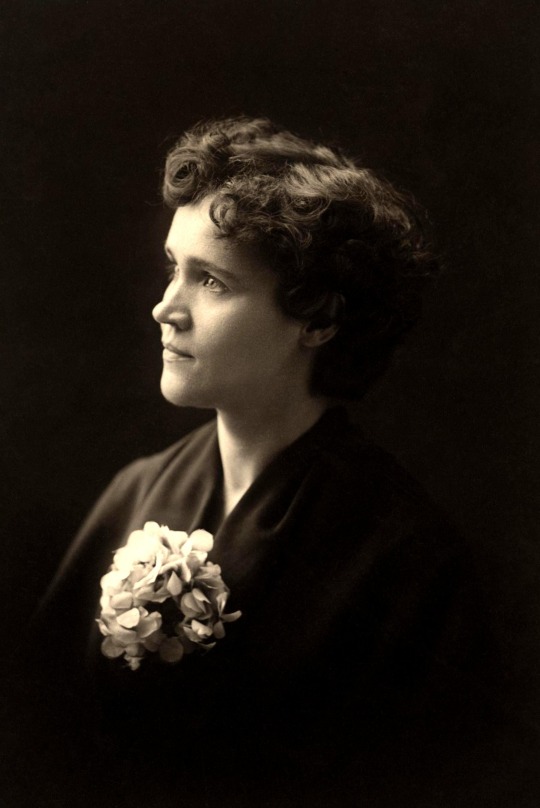
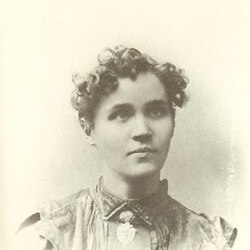
She was born in Leslie, Michigan to Hector De Claire, a French immigrant socialist who fought in the Union, and Harriet Elizabeth Billings, a New Englander writer with family involved in the abolitionist movement. She was named after the French philosopher Voltaire by her father, and her mother would read to her and her older sister Adelaide the poetry of Lord Byron before bed. Byron’s poetry had a profound impact on Voltairine more than Adelaide, but they both still loved him nonetheless.
Growing up, De Cleyre was described as a wayward by her older sister. Her juvenilia was filled with her love of nature and want. This was no thanks to her family’s poverty, something which caused Harriet to grow distant and Hector more stubborn. In 1879, her father was away at work in Port Huron and never went back home but still financially supported his family, meanwhile Harriet stayed behind in St. Johns, contemplating her situation and caring for Voltairine and the sick Adelaide as a working single mother. Her mother made the decision to send De Cleyre to live with Hector while she tended to her other daughter. O, how the teenage girl hated the next few years.
Now with her father at Port Huron, De Cleyre was enrolled at Our Lady of Lake Huron by the next year, a convent in Sarnia across the American-Canadian border in Lambton County, Ontario. Despite being Protestant, Hector hoped his daughter would be disciplined by the Carmelite nuns and turn away from her idle reading. For instance, as a young girl she’d often climb trees to privately read her beloved Byron atop the branches, amidst the leaves. Luckily, this unwilling act only changed her for the better, but that doesn’t mean she enjoyed her stay. Early into De Cleyre’s education, she described the convent as a prison, so she made her escape plan to swim across the water and hike back home to her mother and sister. This obviously didn’t work as she soon realised it was impossible and was quickly caught, and then sent back to the convent with a notice to her father of her schemes.
At Our Lady, she became educated more in music and improved her French and writing skills, which served her greatly later on. Her anti-Catholic sentiments smoothed over also, she began to admired the Catholics for their charity towards the poor and ill, young De Cleyre even thought of becoming a nun for a moment, but her defiant spirit and rough experience with the nuns prevented her from going through with the idea. She couldn’t understand religious superstition and she quickly turned to skepticism in the convent. This behaviour only caused trouble for her, but at seventeen she graduated from Our Lady of Port Huron as a self-proclaimed atheist with no master but her own will.
The radical youth soon returned home to St. Johns, but she didn’t stay for long. Two years later, she moved up north to Greenville at nineteen in order to find a job as a private tutor by putting her skills to work and hopefully earn money. While working and living with her aunt, De Cleyre became more involved in the freethought movement, an ideology centred around empirical evidence over traditional and dogmatic beliefs. She grew closer and closer to the anarchist movement through her anti-authoritarian atheism and freethinking.
In 1886, De Cleyre moved once again, still remaining in Michigan but out west towards the city of Grand Rapids. She was no longer a private tutor but editor-in-chief to a freethought magazine, The Progressive Age. Throughout her twenties, she expanded her writings and lectured at various venues and gatherings to her fellow freethinkers, sharing her life story and experiences during her years at Our Lady. She’d tour the Midwest and Northeast with hundreds in the audience, but always return to her home state and the various cities she stayed at during her youth by the end of them, although her childhood home in St. Johns would grow quiet on political issues when she visited, her sister and mother disapproved of her new radical path.
Subscribing to a movement that relied on observation and evidence such as Freethought inevitably lead towards interacting with other ideologies, such as the ever-growing movements of women’s suffrage, socialism, communism, and anarchism. De Cleyre’s transformation into a more pronounced leftist was quick. After attending a lecture by the socialist lawyer Clarence Darrow in 1887, and later conversing with the Jewish anarchist population in Pennsylvania, the twenty-one year old labelled herself a socialist, later an individualist anarchist. The latter label of anarchist became more prominent after she heard the news surrounding the Haymarket Affair, when policemen open-fired on various individuals, including anarchist demonstrators and their own, after an explosive was thrown by an unknown individual to stop the in-fighting during a demonstration for a proposed eight-hour workday. At first, De Clayre was enraged by the unknown perpetrator and called for their hanging, but swiftly renounced her anger after Adelaide’s agreement and instead focused on the unjust attacks that blamed the anarchists. She closely followed the aftermath trial and its sentencing of the anarchist “perpetrators” which only created doubt in her towards the “justice” delivered by the legislative system. From 1880 to 1887, De Cleyre underwent a formative process and progression from what began as an adolescent anti-clerical stance at a convent, she had been transformed into an even more determined person with a set vision for her community and those around her. This was only the beginning of her political journey and eventful life.
#new line#history#19th century#20th century#1860s#1870s#1880s#america#the gilded age#progressive era#midwest#michigan#individuals and figures#voltairine de cleyre#sociology and anthropology#left radicalism#anarchist movement#anarchism#individualist anarchism#anarcha feminism#anarchists#feminist movement#first wave feminism#feminists#labour movement
0 notes
Text


Cycling Suit
1896-1898
United States
The MET (Accession Number: 2009.300.532a–d)
#from another#history#art#textile arts#fashion#clothing#outer garments#womenswear#cycling suit#19th century#1890s#america#progressive era#sociology and anthropology#activities#bicycling
1K notes
·
View notes
Text
I’ve been looking for photos of an old museum before it was demolished, I found a couple of different ones. One photo was taken earlier in its history and before renovations, and then another after, several years before the demolition. I unknowingly added both photos to an early 20th century collage, but on my re-visit I saw a mid-century car in the background of the second photo telling me I wasn’t looking at a photo from decades prior.
0 notes
Text
1908 French chemise (Metrpolitan Museum of Art - New York City, New York USA). From their Web site 351X1014

#from another#history#art#textile arts#fashion#clothing#under garments#womenswear#chemise#20th century#1900s
248 notes
·
View notes
Photo

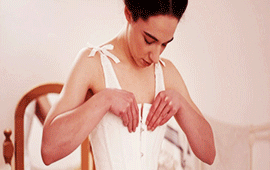
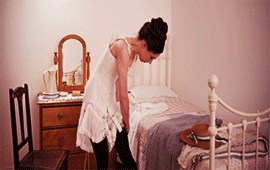
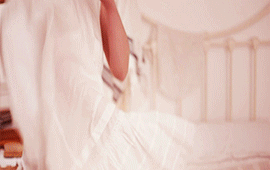
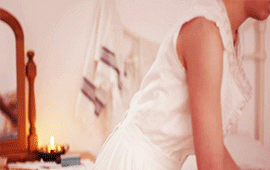

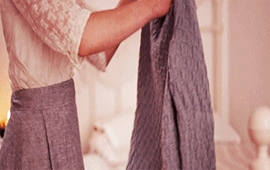
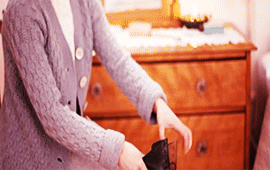
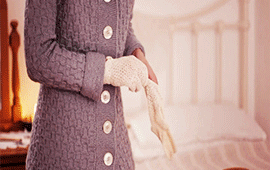
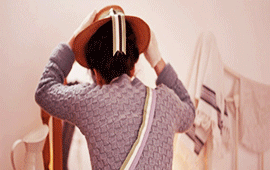
YouTube GIFs || Crows’ Eye Productions: Getting Dressed in 1910s London – Working Class Suffragette
The suffragettes were the militant wing of the Votes for Women movement in Britain in the early 20th century. The named was coined to satirize them, but they subverted that by making the name their own. It was a movement that transcended class boundaries. The meetings were timed so that women might be able to attend after their working day.
Women in service might work a 12-hour day, had little time off, virtually no rights, and no union representation. And, of course, they had no vote. Without a vote, they could be completely ignored; they were almost invisible.
#from another#art#textile arts#fashion#clothing#historical costuming#under garments#outer garments#womenswear#20th century#1910s#united kingdom#edwardian era#england#bread and roses#suffrage movement#womens suffrage#suffragettes#labour movement#working class#class and gender#working women
62 notes
·
View notes
Text
A favourite setting of mine in period pieces are museums and galleries, where the main character(s) wander around a room until they see a particular statue that catches their fancy. I’m aware they’re merely curious or are in awe of it, but I can’t help but imagine them being in love with the image itself while courting or dating their human lover.
#bonus if its a statue of their lover#hmm oc idea?#new line#historical but not history#historical fantasising#art#visual arts#film and tv#period pieces#erotica#nsft#objectum#object sexuality#agalmatophilia#sculpture#statues
0 notes
Note
Where can I find this Victorian forcefem?
Oh man, I haven't kept track of it over the years, I'm afraid. A lot of it follows the pattern of "when I was a young boy, my mother/nursemaid/Female Authority Figure made me dress up as a girl [as a punishment/because they liked girls better/Insert Flimsy Reasoning Here]. and now I secretly like wearing women's clothing while women dominate me tee hee!"
They called it petticoating, pinaforing, or petticoat punishment (some of which terms I think are still in use? but I'm not sure since that's not my scene for a multitude of reasons), and there's a Wikipedia page on it. They exclusively discuss full-length novels that mention it, but I'm sure I've seen write-in sections on the subject from the same magazines that published likely-fictional content on tightlacing, nipple piercing, spanking pretty housemaids, etc.
#from another#history#art#literary arts#literature#erotic literature#19th century#erotica#nsft#feminisation#forcefem
71 notes
·
View notes
Text
oh god my post ragging on r/SapphoAndHerFriend-ism made it to Reddit
some clarification:
I did not say, nor do I believe, that modern sexuality or gender terms can never be applied to historical people. I actually think that argument is disingenuous and harmful. I DO think proper context should be given, ie "they wouldn't have called themself XYZ, but here's why we feel confident back-applying the term to them: [evidence]"
Yes, you do need evidence to claim that a man and a woman were lovers. I frequently say, if it comes up, that someone who was in an M/F marriage in history was "probably heterosexual" rather than a confident assertion of the same
I am gay. I am a big ol' lesbian. Oh my god "history worker" and "queer" are not mutually exclusive
I am merely really really annoyed when people cry Erasure just because historians didn't use 100% modern-approved language in discussing queer figures that they were being completely open about
genuinely I have seen people get their knickers in a twist because a museum called two romantic partners "companions" and in no way denied their romance
#agreed.#from another#history#general history#sociology and anthropology#social history#queer history#gsrm
243 notes
·
View notes
Note
Hi! So I’m doing a personal art project on fashion in the 1890s, and I am struggling. Like a lot. I created a Pinterest board of a bunch of 1890s dresses, problem is I’m having a hard time identifying the uses for some of them. I know that a Walking dress is a type of Day Dress but how exactly would one differentiate the two? What exactly would be the physical differences between a Walking dress and a Day dress?
And did everyone have walking dresses? Or was the more of an ‘upper class’ sort of thing?
I understand the struggle. It was quite hard to parse out at first for me too since the Victorian dress etiquette was pretty complex. Fortunately I have made a post about that specifically for 1890s. If it doesn't answer all your question or you want me to specify something, feel free to sent another ask! I used examples from different years of the decade to make it more applicable to the whole decade but it should be remembered that there was changes to the silhouette thorough the decade and every type of dress would be adapted to the shifts in the fashionable silhouette.
Though as I point out in the post it focuses on the upper class. For the working class and to some extent middle glass it was a little different. The working class did not participate in the high society events, but many middle classes could at least to some of them, and working class women worked outside of the house too, while married middle class women generally didn't. Young unmarried middle class women did often work, for example as secretaries and shop assistants in respectable establishments. Working women didn't spend their days receiving guests at tea parties or attending them, so they didn't have tea dresses, nor did they generally have evening gowns which would be required in formal high society events. They might have a dinner dress though if they were well off, which was the least formal of evening gowns. Middle class women would generally have these. Working class and the casual middle class day dress resembled much more the walking dress of the upper classes than their other day dresses. They would have a church dress that would be a little fancier day dress for church and usually even fancier day dress for formal functions, like weddings.
Here's working class women in their work attires that were practical day dresses and aprons usually.

And here's middle class women in fairly similar dresses.
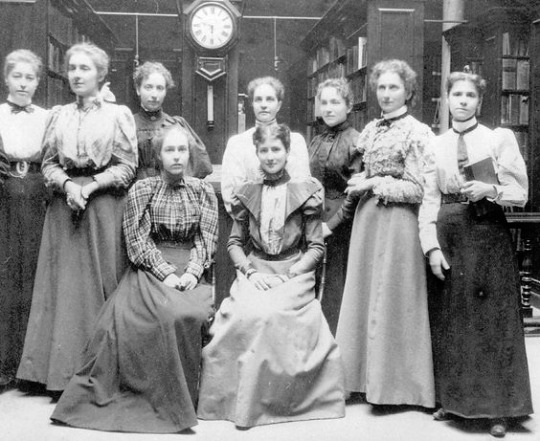
Different types of day dresses
Maybe I should expand more on the differences in day dresses and how walking dress relates, since while I talk about day dress and walking dress separately in the linked post, I don't fully explain the whole day dress thing since I did need to simplify. Day dress was not a specific dress, but quite a broad category of dresses that were used in different situations thorough the day. They are quite hard to differentiate sometimes, mostly because they weren't really that strictly different from one another. To understand why one dress was used in one situation, we need to understand the dresses in the casual to formal scale. Usually casual is looser, more practical, less elaborate and more covering but has shorter hem and the opposite apply to more formal.
When staying at home, people would be in their most casual clothing, but the level of formality would rise when receiving guests. Leaving home would require higher level of formality, but how high would depend on what you were going to do and who would see you doing it. This is why visiting gown is more formal than the dress the hostess would receive their visitor in. Close family members and friends could be casually received outside specific events during the day and a casual house dress or tea dress was acceptable for that. Afternoon tea was an important social event for upper and middle class women, and it would be slightly more formal occasion, but still for family and friends and therefore somewhat casual. Visiting dress were on the formal end of the afternoon dresses, but more casual versions of it could be used to go see a close friend or family member in a more casual way. Carriage dress was worn for open carriage rides, which were social events for the upper class. There they would be seen prominently by their whole community while they socialized in the carriage among their peers. Carriage dress was therefore very formal and elaborate, often had a trail and usually had a cloak as the wind might get cold. Promenade dress was for walks in a park. This was different from an actual walk, as the upper class people would go to a park to be seen and to socialize. Promenade dress was then somewhat formal, though less than most visiting dresses or carriage dress.
Here's first an example of a quite elaborate visiting dress from 1894-95 and then carriage dresses, first image from 1894, second from 1891.
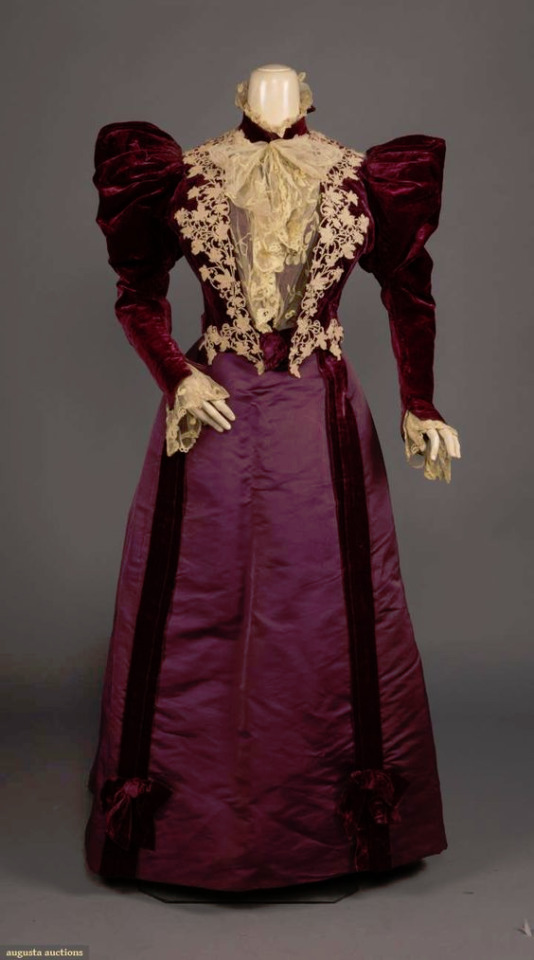


Walking dress was the least formal of the dresses an upper class person might wear outside the house (excluding sports dresses). It was used by upper class people for city walks and traveling, but as I said earlier the practical day dresses of middle and working class were very similar to it. It was practical and simple. It had shorter hem, it was made from sturdy materials, often wool and it was usually tailored. Dress Reform Movement, which was a moment among the first wave feminists, advocated among other things for tailoring in women's clothing, arguing it was more practical. The trend begun in 1880s and it's really most prominent in walking dresses and sports wear of 1890s. Which it why the walking dress typically has a lot of elements from men's fashion. Unlike the other day dresses, which were rarely tailored and had usually just the skirt and the bodice, the walking dress had a skirt, shirtwaist, tailored jacket and sometimes a waistcoat and a tie or bow. Sometimes a walking dress is hard to distinguish from a promenade dress. Promenade dress was more elaborate and while it usually had a shorter hem than for example carriage dress, it wasn't as short as for a walking dress and it might even involve a bit of trail. The things is promenade dress and walking dress probably had a lot of overlap.
Here's fashion plates showing promenade dress styles, first from 1896, second from 1898, both conveniently showing an elaborate dress and a tailored look that's easy to get mixed with a walking dress, and possibly would have been used as such in some cases.
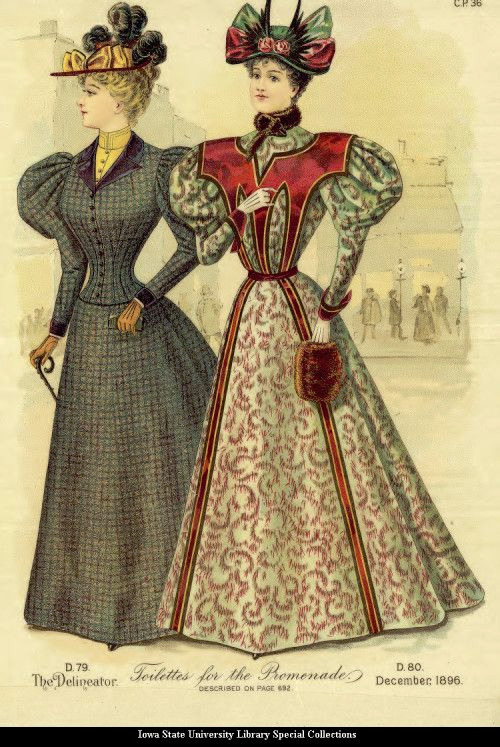

Here's walking dresses shown in a picture from 1899 (note the early photoshop to make the waist smaller), a fashion plate from 1896 and a painting from 1897. Really the main difference is the hem of the skirt to the promenade dresses of tailored style.



Shirtwaist
I will mention on it's own shirtwaist too, since it highlights a lot of the class differences and how they showed. The shirtwaist, or blouse waist or sleeve shift, is a hard garment to pinpoint as it was used for many different purposes by different people. It was one of the first garments to be mass-produced and therefore very affordable. It was also loose and unfitted by nature and so easy to move in. For these reasons it was used with a practical skirt by working class and middle class women as casual wear. The outfit was sometimes used with a jacket similar in style to those of walking dresses, making it practically indistinguishable from a walking dress. Here's for example pictures of working women class women wearing shirtwaists at work and at town shopping (the other picture could be of middle class women too).


As tailored styles influenced by men's fashion became popular, so became shirtwaists. At the same time sports were becoming popular and sportswear was highly influenced by this tailored trend. Shirtwaist being light and loose was perfect for sports and was used by upper and middle classes for tennis, golf and cycling for example. (I'm working on a post about the history of tennis ensemble where I go deeper into this.) Because of it's very casual nature, it was not considered suitable for the upper classes in most situations outside sports. As seen above it was part of the walking dress for the upper class, but in that situation it was used under a jacket. Young fashionable progressive women, who were often called the New Woman, started using it in their morning dresses and then even casual day dresses.
Here's first a picture of tennis ensemble from latter half of 1890s, a picture of young women from 1898 and a fashion plate from 1898.
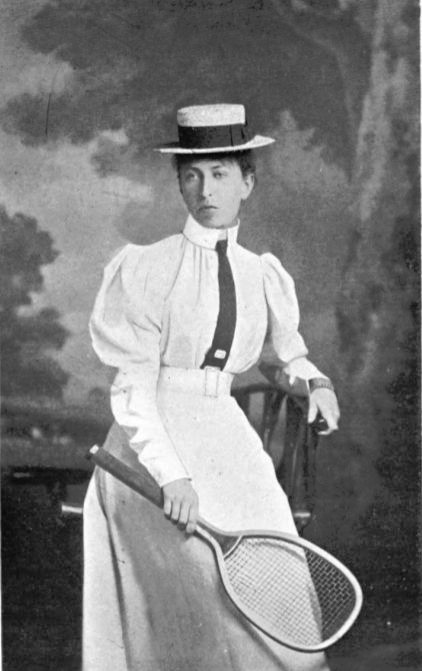

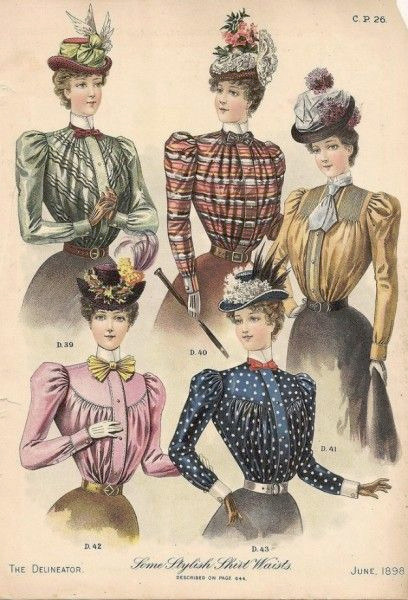
I have a pinterest board of primary source examples for Victorian fashion, where I've made a rough divide between different periods of the era and different types of dresses inside every period. It's not fully organized yet and at least for now the types of dresses are divided very roughly into day dresses, evening dresses, sports ensembles and toilette. Toilette is a vague enough term so I used it here to include basically any dress used exclusively at home. The categories are maybe not granular enough to be helpful for you here, but I'm linking it here in hopes it would be of some help.
#from another#history#art#textile arts#fashion#clothing#outer garments#womenswear#dresses#day dress#walking dress#promenade dress#casual dress#shirtwaist#19th century#1890s#sociology and anthropology#etiquette#social etiquette#class etiquette#bread and roses#labour movement#working class#class and gender#working women
203 notes
·
View notes
Text






Ensemble
c. 1900
Grand Rapids Public Museum
#from another#history#art#textile arts#fashion#clothing#outer garments#womenswear#dresses#20th century#1900s#america#progressive era#midwest#michigan#grand rapids
506 notes
·
View notes
Text
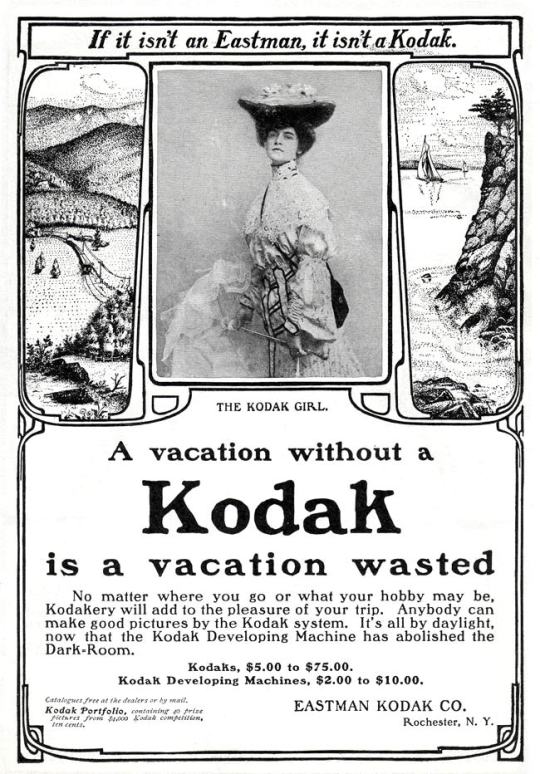
A magazine advertisement for a Kodak camera, their headquarters located at Rochester, New York, Eastman Kodak Co. (c. 1903)
#new line#history#art#visual arts#prints#photography#vintage photography#kodak#the papers#magazine#advertisement#ads#vintage ads#20th century#1900s#america#progressive era#northeast#new york#rochester#women
15 notes
·
View notes
Text
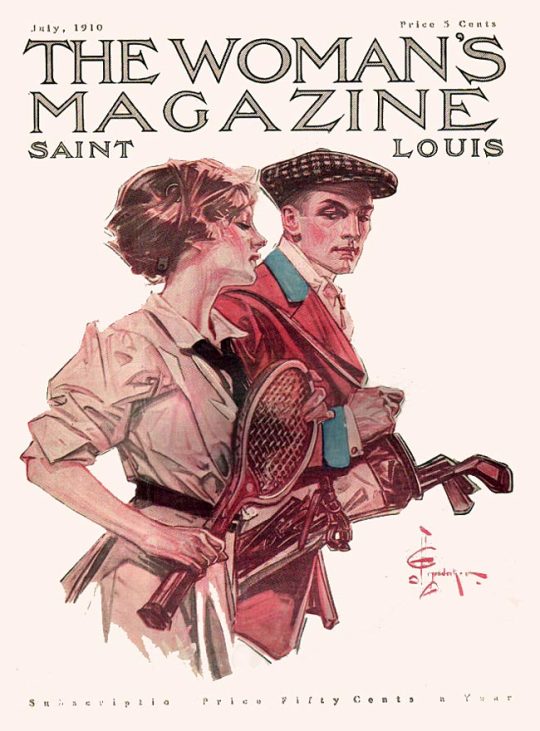
The Woman's Magazine, Saint Louis, July 1910, by J. C. Leyendecker (1874–1951)
#new line#history#art#visual arts#prints#illustrations#cover illustration#j. c. leyendecker#the papers#magazine#womens magazine#covers#20th century#1910s#america#progressive era#midwest#missouri#st louis#women#men#sports#fashion
3 notes
·
View notes
Text
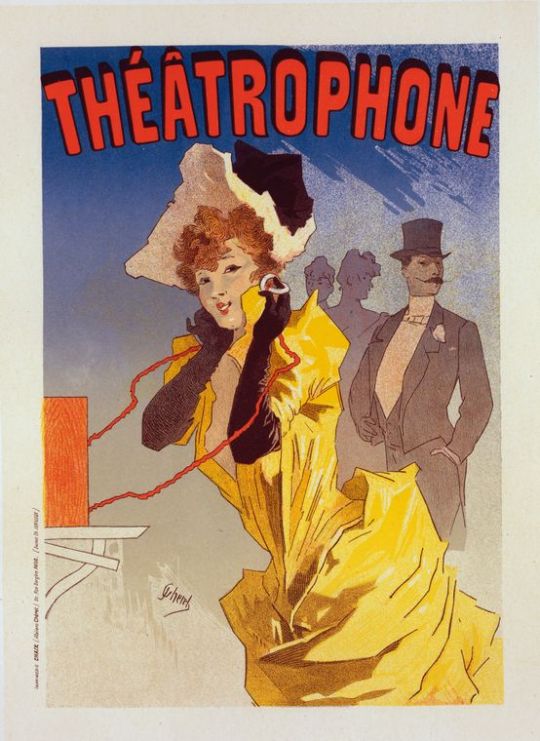
Affiche pour la Compagnie de "Théâtrophone" - 1896
Art by Jules Chéret (1836-1932)
Published by Imprimerie Chaix
#from another#history#art#visual arts#prints#illustrations#posters#19th century#1890s#france#belle epoque#women
2 notes
·
View notes